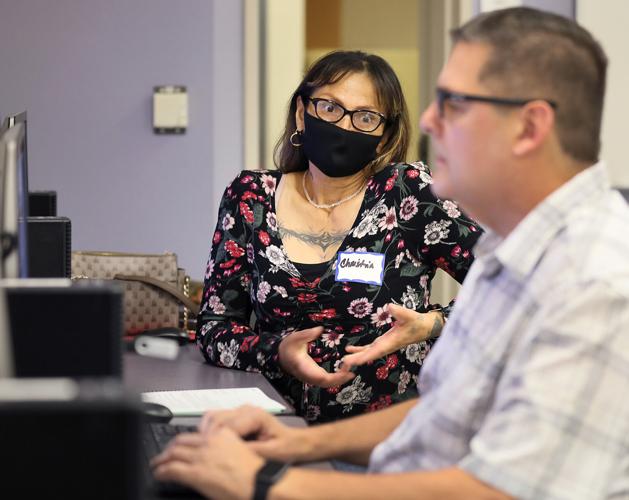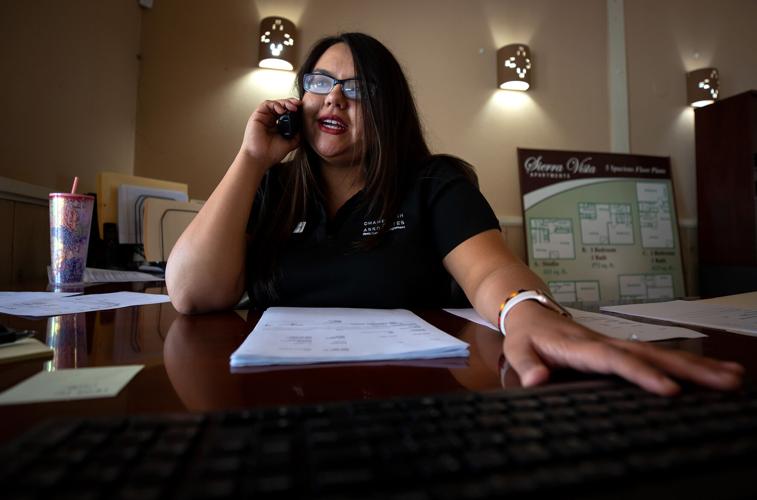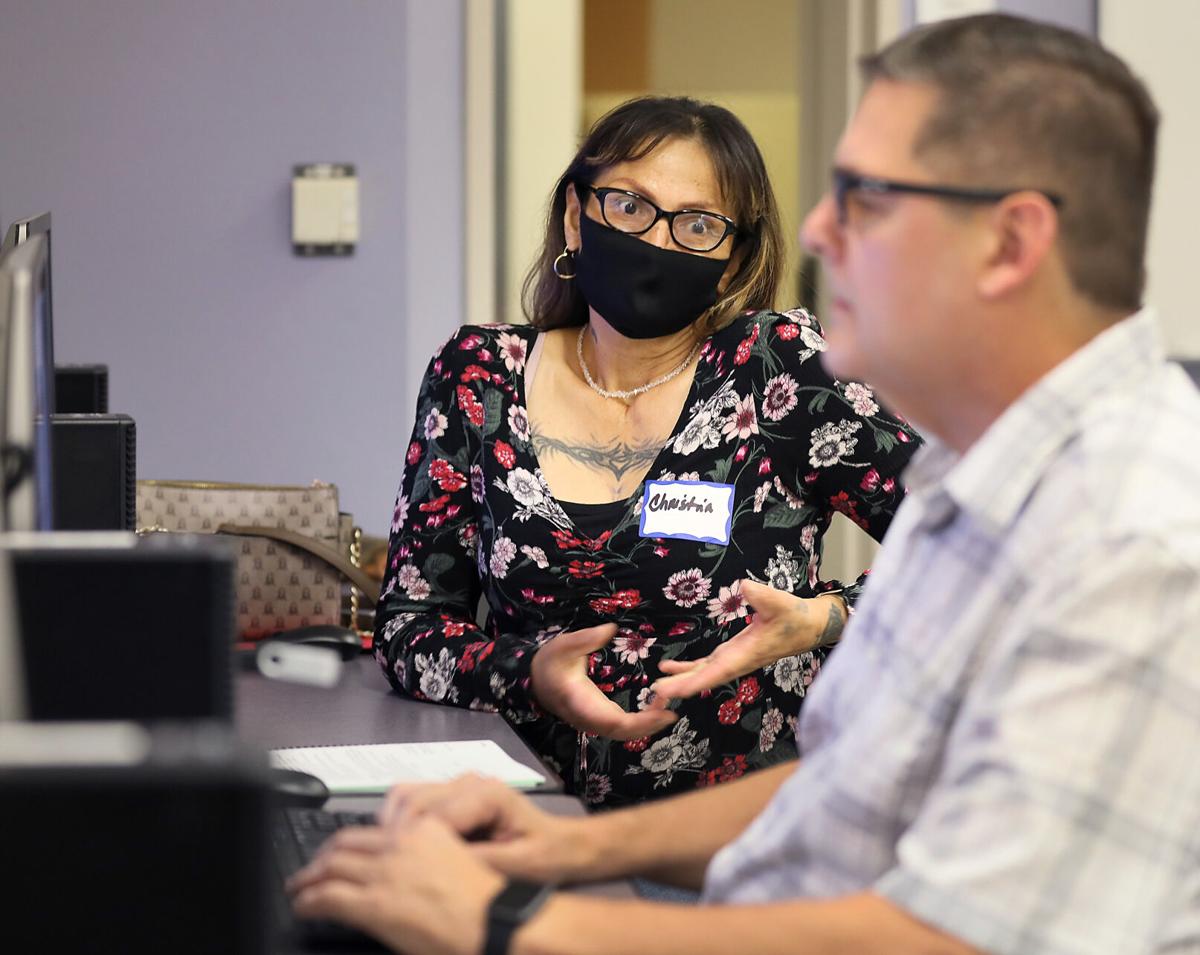Pima County residents behind on rent and eligible for financial help will need one thing to stay out of eviction court in the weeks ahead: a patient landlord.
Housing loss due to illness or unemployment during the pandemic has been minimized for the last 16 months by eviction moratoriums designed to keep people sheltered.
But on July 31, the last remaining federal order was lifted. Many eviction cases that were delayed could become active again as new cases are filed.
Some local attorneys and government workers predict a grim scenario unfolding of more people and families becoming homeless, and of service providers being overwhelmed.
Others, though, are optimistic that a safety net put in place by government agencies will hold. For tenants who qualify, this includes money to help pay rent and utility bills, legal counsel and guidance through the court process, and housing help for those with nowhere to go.
“We just don’t know,” said Dan Sullivan, director of the county’s Community and Workforce Development Department. “We’re hoping for the best, but planning for the worst. We don’t want to have our emergency network overwhelmed, which it could be in the worst-case scenario.”
These unprecedented times have left many landlords and property owners waiting months for compensation, and some cannot afford to keep waiting, said Courtney LeVinus, president of the Arizona Multihousing Association.
That, she said, is the main problem.
“The whole situation has been really a lose-lose situation,” she said.
But, considering the amount of government assistance that’s available, she said, there’s “no reason someone should be evicted.”
Making it work
Each month since the pandemic started, Tucson assistant property manager Roselynn Sanders has knocked on doors to see if tenants in the Sierra Vista Apartments, 3535 N. First Ave., need help applying for rental assistance.
“If they have questions I don’t know the answer to, I do some research. This way, we know there’s no reason they won’t get the rental assistance,” she said, adding she has received a lot of support from their management company, Phoenix-based Chamberlin & Associates.
It’s an approach that’s kept people housed, and helped them avoid financial strain.
“We got really good responses when we helped them do it instead of just telling them to apply,” Sanders said.
The same type of approach has also been adopted at Town and Country Estates, a 320-acre manufactured home community along East Benson Highway.
One of its tenants, Jesus Linarus, owns the mobile home where he lives at Town and Country but during the pandemic, got behind on the rent for the lot as well as utilities. Through county assistance, he was able to get enough help to get caught up and keep his site, said Jennifer Martinez, community manager at the park.
Martinez said park workers post flyers in the community office advising residents about available assistance.
“We listed these programs on the flyer,” she said, “and also directly communicated this to our residents.”
‘Communication essential’
Christina Olivas is longing for that kind of help with rental assistance. She applied six weeks ago, and now says she needs her landlord to submit documents that are required.
Olivas lives in a rental along West 34th Street, an area with a high poverty rate, a factor that could get her help faster due to some relaxing of federal standards.
This is the change: If a person lives in an area that census findings show is highly stressed, their case may be expedited.
That accounts for about 60% of the cases now coming in here, said Danny Knee, executive director of the Community Investment Corporation, an agency collaborating with the county and Tucson to distribute funds.
“This method makes processing cases much easier and limits some of the arduous required documentation that can be taxing on an individual or family in crisis,” he said.
Olivas says she’s lived in the same place for about five years, now with just her teen son, and has had the same landlord the whole time. Her estranged husband and their daughter previously were there, too, but they’ve since moved.
She was working as a day porter, cleaning at the Industrial Commission of Arizona, she said, before she tested positive for COVID-19 in January. She said she became quite sick and then lost her job. She’s applied for unemployment but hasn’t received anything yet.
Olivas’ landlord did not respond to interview requests.
What will happen now, as the eviction moratorium lifts?
Olivas has a verbal agreement with her landlord but there’s no lease, said Nahrin Jabro, a social worker with the Pima County Constables’ Office. That makes Olivas and her son especially vulnerable.
“If her landlord decides, ‘I don’t want the assistance, I just want her out,’ they will need rapid rehousing,” Jabro said.
That’s a difficult thing to secure these days, Jabro said, because community need is so great.
“She’s one that’s definitely on my radar when the moratorium ends,” she said. “The landlord could move to evict immediately.”
‘Enough to serve everyone’
Arizona has received $883 million for rental assistance statewide, LeVinus said, but so far only $72 million has been dispersed.
The delays are largely due to staffing issues, and the amount of documentation and paperwork that’s required to apply.
Pima, Maricopa and Yuma counties have set up their own systems to distribute the assistance. The state’s Department of Economic Security is distributing $300 million in other counties.
In Pima County, more than 15,000 applications for rental assistance have been made since November 2020.
Since then, following a three-month lapse in federal funding, many applications were made again — or people found help elsewhere.
Currently, more than 100 new applications are being created daily, with over 800 new requests coming in weekly.
There were close to 4,000 active cases as of July 21 while nearly 3,000 have been approved and received funding.
There is still $13 million in funding available here in the current round of assistance, while another $30 million is expected through the American Rescue Plan.

Roselynn Sanders, assistant property manager at Sierra Vista Apartments, leaves a voice message for a tenant who inquired about rental assistance through email. Sanders and the other office employees are helping tenants get in contact with aid agencies as well as filling out applications for rental assistance.
“The hope is that the landlords of the tenants who have been proactive about signing up for eviction prevention rental assistance will be patient and allow the program the additional time needed to process the tenant’s case,” said Knee of Community Investment Corp.
“We want everyone to understand that there is enough funding to serve everyone that is currently on our waiting list. Our challenge remains the time it takes to collect the needed documents from both parties in each case.”
Imminent homelessness?
As the moratorium ends, a significant increase in court cases is expected, both those to be newly filed and those considered pending but inactive during the moratorium.
The worst-case scenario painted by Matthew Waterman, an attorney with Southern Arizona Legal Aid, is this: Starting Aug. 2, in addition to the expected new eviction filings, more than a year’s worth of backlogged cases will need to be heard as well.
Many tenants will have “no realistic possibility of repaying” what’s owed, he said, except for rental assistance funds that are delayed.
“A huge number of these tenants, who have been able to remain housed throughout the pandemic solely as a result of one of the eviction moratoria, will imminently become homeless,” he said.
The question is whether the safeguards put in place will help prevent this from happening, and to what extent.
Planned changes at the courthouse include having two court navigators on hand to guide people through the system; attorneys being provided to tenants who qualify in contested cases; and, eventually in August, settlement conferences when the tenant and landlord agree to it.
The assistance program set up here now has an added protection: Before payment is approved, the landlord must sign an agreement to keep the tenant housed for at least another 30 days, said Andy Flagg, who recently began heading the county’s new Office of Emergency Eviction Legal Services.
Landlords who want to evict tenants based on an earlier case can ask the judge to make that previous judgment active and request that a writ, or court order, be issued to carry out the eviction. Those requests must be made in writing, said Justice of the Peace Pro Tempore Ron Newman, and will be set for a hearing with notice to the tenant.
Both sides have rights
“The court is sensitive to the unique situations that affect both tenants and landlords,” Newman said. “Our biggest concern is to ensure that the respective rights given to each under the law are upheld and enforced.”
Right now, about six cases are on the calendar per half-hour with contested cases and trials being scheduled on Tuesday and Friday afternoons. The settlement conferences are still being planned.
“The goal is to implement a user-friendly forum benefiting both landlords and tenants,” said Newman, who in June became the only county judge presiding over eviction cases. “Several options regarding procedures and logistics are being considered.”
Under new guidelines issued by the state’s Administrative Office of the Courts, judges need to ask about rental assistance, whether it’s pending or possible to acquire.
“With the agreement of the parties,” the state order shows, “the judge shall continue a proceeding to afford the parties the opportunity to apply for and receive rental assistance or to reach an agreement to resolve the case.”
It used to be that if a tenant might qualify for help, the case had to wait until a later time. Now, however, both parties have to agree.
Burden on landlords, too
What Knee would like to remind the landlords is this: If they wait on evicting, they can receive up to 12 months of back rent and three months paid in advance and that the federal funding, $45 billion paid out nationally so far, is expected to continue through 2022.
“Landlords who have been waiting for payment should continue to be patient if they can be,” he said. “We know this is a difficult ask for those who may not have been paid in six months or more. That is a difficult financial burden they are carrying for our communities that should not be forgotten or ignored.”
While there’s no local data on exactly how challenging it’s been here, a National Rental Home Council survey found that 11% of rental property owners said they had to sell off at least one property due to related financial problems, and 12% were forced to quit being landlords altogether.
Locally, said LeVinus of Arizona Multihousing, it’s the “mom-and-pop rental property owners being most impacted by this.”
This, LeVinus and Knee both said, could really affect affordable housing in communities nationwide.
“It has highlighted the affordable housing crisis in Tucson and Pima County especially as the housing market has remained hot and purchase prices and rent have both skyrocketed over the past year,” Knee said. “This unfortunately only exacerbates and add layers to the eviction issues the community is facing.”
He said this is the absolute worst-case scenario for everyone involved: the tenant who has no shelter, the landlord who will lose all of the rent owed, and the community dealing with another wave of need related to the pandemic.
LeVinus said she expects the worst of that can be avoided and that landlords will continue to work with tenants who are applying for assistance. She predicts there will not be, as many have been saying, a “tsunami of evictions.”
Her strong advice to the at-risk tenants is to communicate often, and clearly, with their landlords about what they are trying to do to pay up.
“The most important thing that residents could do is communicate,” she said. “They need to open up that line of communication.”
Said Knee: “Again, we understand the burden that landlords have been forced to carry through this pandemic. It is unfortunate that the need is so great in our community.
“We humbly, with empathy and understanding, continue to ask landlords for their patience.”






